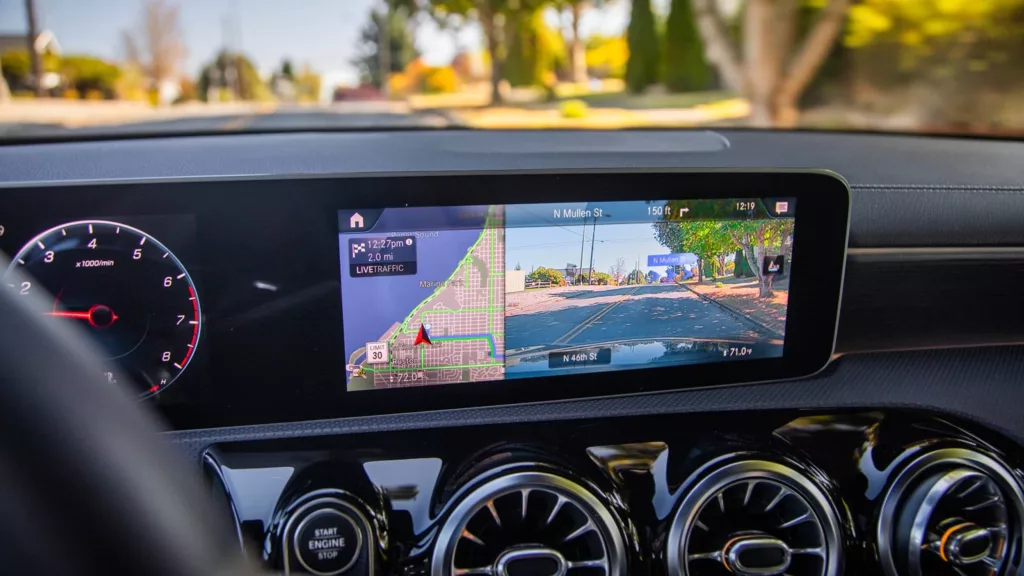Newer vehicles now come equipped with a rearview camera, with motorists equipping old vehicles with advanced rearview cameras. But why this trend? Is rear view Camera mandatory? Or are motorists simply installing rearview cameras because of the advantages? Let’s find out.
In May 2018, the United States made it mandatory for all vehicles weighing under 10,000 pounds to have a rearview camera installed. Manufacturers accelerated this policy by mounting factory-installed rearview cameras in all their vehicles. This policy was extended to neighboring Canada in October 2016. Both countries also have a penalty for motorists without a rearview camera installed
Nonetheless, rearview cameras are an essential car device to keep motorists safe on the road and improve the driving experience. Whether you use the wireless or corded option, you’ll receive value for your money. So, what are the benefits of installing a rearview camera in a car? And how does a rearview camera work?
Table of Contents
HOW REARVIEW CAMERAS BECAME MANDATORY
Rearview cameras have been in existence since 1956, however, it was only an aftermath solution and never enough to replace rearview mirrors. Nevertheless, General Motors installed it in one of their models and mounted a TV on the dashboard to transmit images from the camera, however, this was short-lived. But reintroduced in 1991 with the Toyota Soarer limited. However, just like General Motors, it was also discontinued but reintroduced by Nissan in 2002.
Since it wasn’t mandated by law as of then, Motorists had the option of choosing cars with rearview cameras. And motorists who saw the need simply installed aftermath solutions. But it wasn’t enough and the shortcomings of rearview mirrors slowly made cameras a necessity. We’ll discuss the shortcomings in the next part of this article.
The road to the legislation was paved after Cameron Gulbransen, 2, was killed in an accident that would have been avoided if a rearview camera was installed in his father’s car. As a way to compensate for his son’s death, his father demanded that rearview cameras be mandatory. And after years of agitation from 2007, legislation made rearview cameras mandatory in cars manufactured from May 2018
Shortcomings Of Rearview Mirrors
Rearview mirrors are great for reversing in a garage or escaping tight traffic. They have been the best solution for motorists since time immemorial, however, due to some shortcomings, they are now outdated.
For example, while a rearview mirror shows you what’s behind you, it doesn’t show what’s below the truck of the car. Unlike the front of the car, drivers can only see a limited angle behind them. This is what caused Cameron Gulbransen’s death at the age of two.
HOW REARVIEW CAMERAS WORK
Rearview cameras are either installed on the taillight or bumper, but low enough to provide a complete view of the rear end of the vehicle. Then a monitor is mounted on the dashboard. But some models use part of the factory-installed rearview mirror as a monitor. We recommend having a dedicated monitor to provide a complete, unobstructed view of your rear end.
ADVANTAGES OF HAVING A REARVIEW CAMERA
Over 31% of backover fatalities have been children. The absence of rearview cameras in vehicles caused a lot of harm and accidents, but with the introduction of these cameras as a compulsory component of every vehicle, accidents have reduced as drivers now have a wider view of their rear. Here are the advantages of installing a rearview camera in your car.
Sightline for Kids and Pets
As mentioned above, kids are some of the highest casualties of backover accidents. While pets are also included in these unfortunate statistics, they can easily swerve away from danger. Nonetheless, without a rearview camera, drivers are more likely to hit objects, humans, and pets that are below the sight of view of rearview mirrors. According to statistics, there are over 200 deaths and 14000 injuries caused by backover accidents each year. These statistics have however reduced with the introduction of rearview cameras in newer cars.
Elimination Of Blind Zone
Rearview cameras eliminate the blind zone in the driver’s rear, thus providing a complete field of view for reversing and evading traffic. According to research, installing a rearview camera in your vehicle reduces the blind zone by up to 90%, with some upgraded aftermath options providing up to 99% coverage.
Unlike rearview mirrors, it allows drivers to see what’s below and above the trunk level of their vehicles. We recommend installing cameras with only visual features as relying on audio notification provides a false sense of security.
This forces the driver to keep their eyes on the monitor, surveying the rear of the vehicle. Also, by using the rearview mirror as a monitor, drivers simply have to just continue in their previous tradition of monitoring their rearview mirror and not waste time assimilating to a new view.
They Aid Parallel Parking
While parking your car is a simple task, parallel parking, on the other hand, is difficult for most drivers, experts, and amateurs to pull off, even with the aid of a rearview mirror. Drivers end up parking on the curb or hitting other parked vehicles. However, rearview cameras provide a better view of the angles of your rear and side, which helps drivers to better manage the space around them to carefully evade other vehicles, obstacles, and tight traffic.
They help drivers navigate Traffic
Drivers usually get stuck in traffic as there are several obstacles in their path that are hard to navigate. By installing an advanced rearview mirror, drivers can see in detail everything behind them, including humans and other vehicles. This provides an accurate angle of obstacles thereby providing drivers with the best possible options and paths.
DO BACKUP CAMERAS RECORD FOOTAGE?
Backup cameras, also known as rearview cameras, are only activated when the gear is in reverse, to preserve power and extend lifespan. This prevents it from recording events, more so, backup cameras don’t have a feature to record events. If you’re looking for a device to record events for insurance claims, then invest in a dashcam.
CAN YOU ADD A BACKUP CAMERA TO ANY CAR TYPE
New cars are equipped with backup cameras according to the law. However, most cars manufactured before May 2018 lack this vital device. If you don’t have a new car but want this essential device, then buy an aftermath backup camera.
There are several advanced options in the market to choose from. They vary depending on price, size, and features. Some backup cameras have monitors on the dashboard, while others are fitted into the rearview mirror. They are also relatively easy to install.
WHAT TO LOOK OUT FOR IN BACKUP CAMERAS
There are different models of backup cameras, with diverse specifications and performance range. Choosing the best backup camera requires careful attention. Here are what to look out for choosing an aftermath backup camera.
Viewing Angle
For optimal performance and complete view, NHTSA recommends a baseline of 130 degrees. But a wider baseline of 180 degrees will give you a wider view of your rear.
Screen Location
Backup cameras can either be mounted on the dashboard or integrated into the rearview mirror. The screen location should provide easy access for motorists. Avoid complicated screen locations such as those outside your sight of view. Most motorists prefer the rearview mirror integrated option because it doesn’t require extra effort.
Parking Sensors
This augments a rearview mirror by alerting drivers to obstacles such as cars, buildings, and poles behind them. Parking sensors help to prevent collisions but are not inefficient at detecting moving objects such as children and pets. While parking sensors are a great addition to backup cameras, they are not essential nor required.
Conclusively, rearview cameras are an upgrade to rearview mirrors. They transmit a comprehensive view of your car’s rear to a monitor installed on the dash, of integrated into the rearview mirror.



